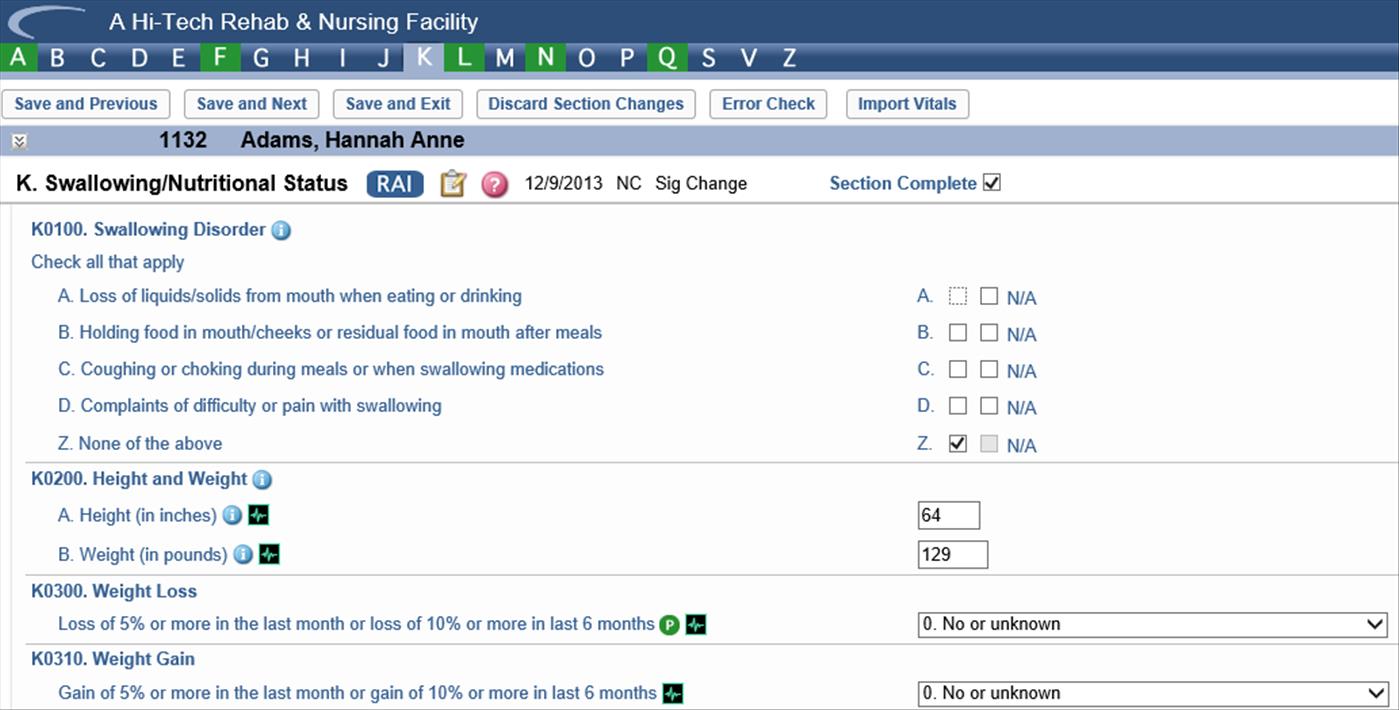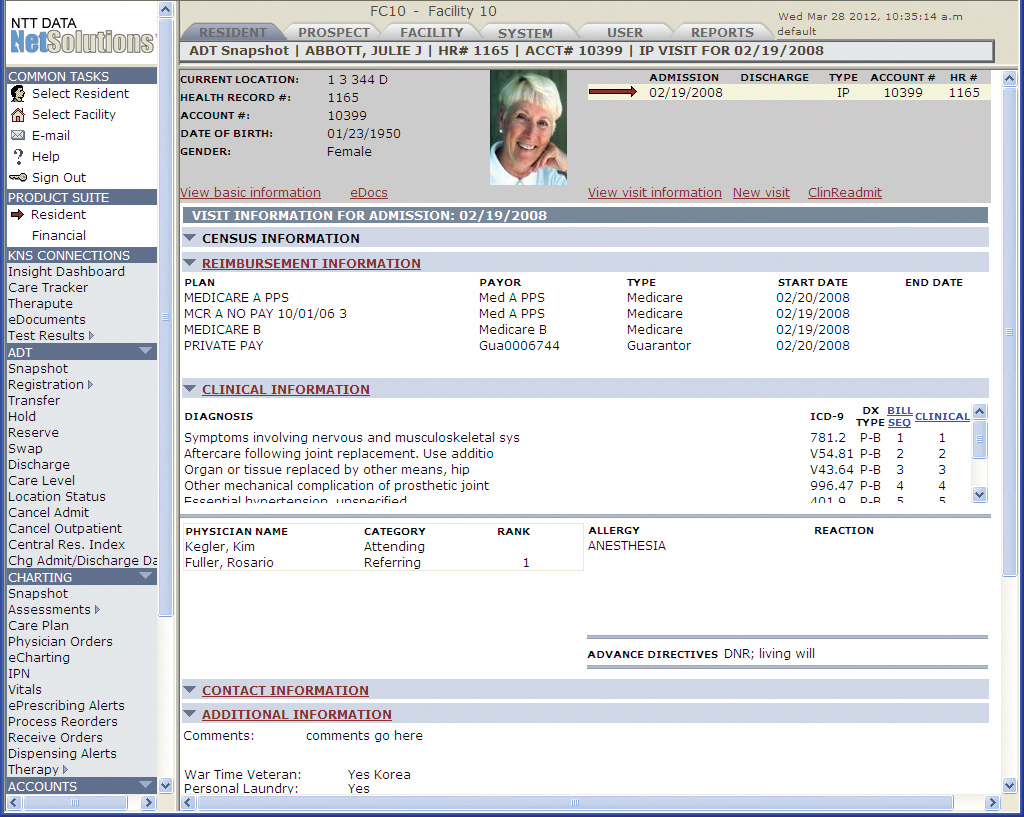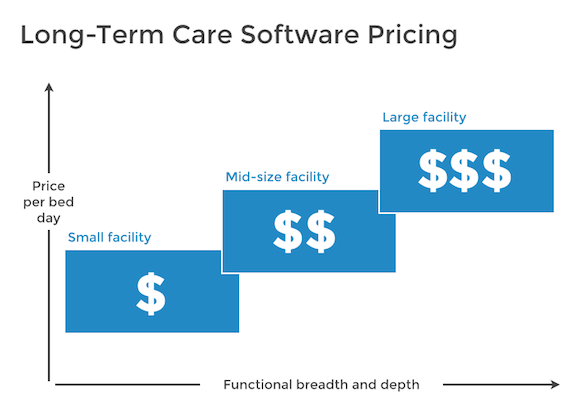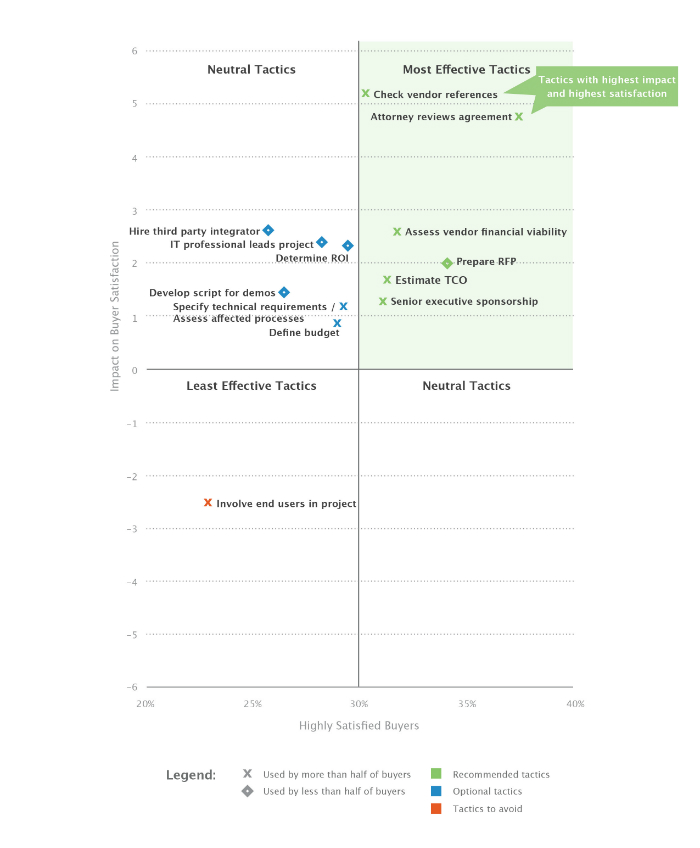Find the best Long Term Care Software
Compare Products
Showing 1 - 20 of 113 products
Sort by
Reviews: Sorts listings by the number of user reviews we have published, greatest to least.
Sponsored: Sorts listings by software vendors running active bidding campaigns, from the highest to lowest bid. Vendors who have paid for placement have a ‘Visit Website’ button, whereas unpaid vendors have a ‘Learn More’ button.
Avg Rating: Sorts listings by overall star rating based on user reviews, highest to lowest.
A to Z: Sorts listings by product name from A to Z.
ECP
ECP
ECP is a cloud-based electronic health records (EHR) solution that assists living and senior care communities of any size. It is suitable for multi-state providers and includes assessments, care charting, alerts, task lists, and r...Read more about ECP
Eldermark
Eldermark
Eldermark’s comprehensive software is built for the business of senior living. Centralize and connect all your senior living software like EHR, EMAR, resident engagement, marketing, billing, and more onto one platform. Make inform...Read more about Eldermark
WellSky Long-Term Care
WellSky Long-Term Care
WellSky Long-Term Care (formerly Experience Care) is a comprehensive EHR platform that helps providers in skilled nursing, continuing care retirement communities, assisted & independent living, and intermediate care manage these c...Read more about WellSky Long-Term Care
MatrixCare Skilled Nursing Facility
MatrixCare Skilled Nursing Facility
MatrixCare’s Skilled Nursing software is built to meet the specific skilled nursing facilities. Our industry-leading EHR solution features clinical decision support to guide clinicians at the point of care with evidence-based prac...Read more about MatrixCare Skilled Nursing Facility
Talk with us for a free
15-minute consultationSoftware Advice is free because vendors pay us when they receive sales opportunities.
This allows us to provide comprehensive software lists and an advisor service at no cost to you.
This allows us to provide comprehensive software lists and an advisor service at no cost to you.
Meet Eric, a software expert who has helped 1,534 companies select the right product for their needs.
Talk with us for a free
15-minute consultationSoftware Advice is free because vendors pay us when they receive sales opportunities.
This allows us to provide comprehensive software lists and an advisor service at no cost to you.
This allows us to provide comprehensive software lists and an advisor service at no cost to you.
Tell us more about your business and an advisor will reach out with a list of software recommendations customized for your specific needs.
STEP 1 OF 4
How many beds do you have?
Jotform
Jotform
Jotform is a cloud-based form automation solution that enables users to publish online forms and record customer responses. It helps users to generate leads, collect order payments, conduct customer surveys, manage job application...Read more about Jotform
AxisCare
AxisCare
As home care’s trusted all-in-one software solution for both single and multi-location enterprise-level home care agencies, AxisCare provides back-office and point-of-care solutions that help agencies in all 50 states and 4 differ...Read more about AxisCare
Connecteam
Connecteam
Connecteam was designed and built as a true all-in-one solution. Easily engage and manage non-desk employees with a true all-in-one mobile app. Connecteam offers a powerful, mobile-first platform that helps improve communication, ...Read more about Connecteam
Net Health
Net Health
Net Health Therapy for Hospitals – Outpatient is cloud-based rehab therapy documentation, scheduling and practice management software designed specifically for hospital outpatient settings. A fully-integrated solution, Net Health...Read more about Net Health
Carepatron
Carepatron
The healthcare workspace for teams and their clients. Notes, Clients records, Appointments, Billing, Payments, Transcription, Communication & more held in one place. ...Read more about Carepatron
Tabula Pro
Tabula Pro
Tabula Pro is a web-based assisted living software designed to help senior living facilities manage forms, documents, scheduling and reminders. Key features include staff management, medication tracking, admissions management, car...Read more about Tabula Pro
TheWorxHub
TheWorxHub
TheWorxHub by Brightly Software (formerly Dude Solutions) is a next-generation work and asset management CMMS platform, designed to streamline operations and facilities maintenance, for smarter, more efficient maintenance and oper...Read more about TheWorxHub
Cerner Ambulatory EHR
Cerner Ambulatory EHR
Cerner's PowerChart Ambulatory EHR is a hybrid EHR solution that caters to clinicians in hospitals and ambulatory facilities. PowerChart is designed to help with multi-entity electronic medical record creation. This solution can b...Read more about Cerner Ambulatory EHR
myUnity Home Care & Hospice
myUnity Home Care & Hospice
Netsmart myUnity Home Health and Hospice EHR (formerly DeVero) is a cloud-based, clinical point-of-care system that is intuitive, compliant and user friendly. The system supports all post-acute service lines, including home health...Read more about myUnity Home Care & Hospice
ShiftCare
ShiftCare
ShiftCare is an all-in-one care management platform designed to increase efficiency for care and support providers. Access and manage your client documents, billing & invoicing, scheduling & rostering, progress notes, employee in...Read more about ShiftCare
AL Advantage
AL Advantage
AL ADVANTAGE is a cloud-based senior living software, designed and supported by senior living health care experts. Senior caregivers record resident care activities for specific state compliance and optimum clinical outcomes. The ...Read more about AL Advantage
ALIS
ALIS
Assisted Living Intelligent Solutions (ALIS) is electronic health records (EHR) software for assisted living and memory care communities of all sizes throughout the U.S. Founded in 2005, vendor Medtelligent designed ALIS as a Web-...Read more about ALIS
ScheduleAnywhere
ScheduleAnywhere
ScheduleAnywhere is a hybrid employee scheduling platform that helps human resources (HR) departments in businesses to manage employee scheduling routines and activities. The solution can either be deployed on-premise or hosted in...Read more about ScheduleAnywhere
ContinuLink
ContinuLink
ContinuLink provides Home Care and Home Health EMR software solutions for agencies in the pre and post-acute care market. ContinuLink enables the business of caring and has earned the trust of some of the largest and most reputabl...Read more about ContinuLink
Intelligent Medical Software
Intelligent Medical Software
IMS (Intelligent Medical Software) by Meditab Software is an Electronic Health Records (EHR) and Practice Management solution that includes applications for e-prescribing, practice reporting, a patient portal, and communication to...Read more about Intelligent Medical Software
Senior Living Core Platform
Senior Living Core Platform
PointClickCare's Senior Living Core Platform is a senior-care focused platform that allows nursing and assisted living providers to provide the best possible resident experience, attract and retain talent, and ensure risk and safe...Read more about Senior Living Core Platform
Popular Comparisons
Buyers Guide
Last Updated: November 21, 2023"Long-term care" (LTC) is a term that can refer to any post-acute or extended-care setting: from nursing homes to assisted living facilities to adult day care centers to home health care. The patients who receive care in these settings may be any age or gender, but the modal LTC patient is elderly.
Long-term care software vendors provide products for nursing homes and skilled nursing facilities (SNFs), assisted living facilities, independent living facilities and continuing care retirement communities (CCRCs).
Long-term care software demonstration video from MedTablet®
There are many vendors offering many LTC solutions. We've created this guide to help LTC facilities understand their options and identify the solutions that best meet their needs. Here's what we'll cover:
What Is Long-Term Care Software?
Common Features of Long-Term Care Software
What Is Long-Term Care Software?
Long term care software can be considered to live within the geriatric software umbrella. Products in this category help care facilities automate clinical, financial, marketing and other activities to streamline workflows and operate more efficiently. For example, facilities may need marketing solutions to track leads and referrals. Nursing homes may need electronic medical records (EMRs) to track patients' medical information.
(Some may consider home health to be a part of the long-term care spectrum. For more information on systems designed for other types of LTC organizations, check out our home health software guide or our hospice care software guide.)
Common Features of Long-Term Care Software
Clinical/electronic medical records (EMR) | Long-term care EMR software automates clinical documentation by providing digital storage and access to patients' medical information. The EMR should also be able to send and receive care summaries during transitions of care. |
Clinical—MDS | Clinical applications also usually include support for Minimum Data Set (MDS) assessments, the federally mandated clinical assessment of all residents in Medicare- or Medicaid-certified nursing homes. |
Clinical—eMAR and eTAR | Clinical applications also typically offer medication management in the form of electronic medication administration records (eMAR) and electronic treatment administration records (eTAR). |
Point of care | These solutions can be used at the point of care, to document or access information from the bedside. Point-of-care solutions often help with speed and eliminate the need for double entry. They also allow quick, accurate access to residents’ health status information. |
Patient scheduling | Scheduling solutions allow staff to schedule medical appointments for patients (residents). A scheduling application will facilitate not only the making and editing of appointments, but also quickly searching and finding scheduled appointments. |
Billing | Billing software helps LTC facilities automate repetitive or error-prone billing tasks. For medical biling related to the medical evaluation of patients, implementing a software system often results in improved coding and collections. |
Marketing | Marketing software helps facilities track leads and manage communications. For SNFs, marketing platforms may also help with the mangagement of referrals and preadmissions. |
Of course, different solutions will offer different types of applications, but these are the applications categories we've found to be present in most LTC systems.
](https://software-advice.imgix.net/managed/other_pages/LTC/hi-tech-MDS.jpg)
The MDS Section K screen of the Hi-Tech Software system
Deployment Strategies
You’ll have choices when it comes to deploying your LTC software; here are the primary options to consider.
Standalone application or integrated suite. You’ll need to determine up front whether you want to implement a single application for a specific task, or a system that offers multiple applications. A single application purchased on its own—for example, only EMR or only billing—is known as a “standalone” or “best-of-breed” application. Alternatively, you may want to implement one system that contains several applications: what’s known as an “integrated suite.”
We find that most buyers choose an integrated suite. However, a standalone solution might be right for you if:
You don’t want to automate certain parts of your workflow, such as billing;
You already use software for one standalone application, but need to find a different vendor for another application; or
You outsource certain parts of your workflow, such as billing, and don’t wish to bring that function back in house.
On-premise or cloud-based. You’ll also need to determine whether you want to deploy your software “in the cloud,” or on your own servers. Cloud-based deployment is also referred to as “Web-based” or “software-as-a-service (SaaS).” These solutions are deployed “in the cloud” or over the Internet, rather than being hosted on a facility’s own local servers.
This type of deployment is especially popular among LTC facilities, which often don’t have full-time IT staff to manage a system running on internal servers. Cloud-based software vendors also “push” updates out to their users automatically, rather than requiring users to install new or updated versions manually.

The Point of Care interface of the PointClickCare cloud-based system
A cloud-based deployment model typically lowers the upfront cost of implementation, since it requires less investment in servers and other physical infrastructure. Cloud-based systems are typically priced as a monthly subscription, rather than an upfront license fee. Most LTC software vendors offer a cloud-based option.
](https://software-advice.imgix.net/managed/other_pages/LTC/NTT-ADT-snapshot.jpg)
The Admit-Discharge-Transfer (ADT) screen of the NTT Data cloud-based system
On-premise software hosted on a facility’s own servers may be preferable for facilities that do have a dedicated IT team available to manage the system. These systems are typically priced through an upfront fee for a license. Although the initial investment is higher with on-premise systems, the costs tend to balance out over time, since cloud-based costs are spread evenly over the life of the software.
Pricing Structure
Web-based nursing home software is typically priced "per bed day," or in some cases "per patient day." In other words, you’ll most often pay a subscription fee that amounts to some fixed price per day for each bed in your facility (or each patient in your facility, which is usually based on a census average). For assisted living or independent living facilities that don't have a skilled nursing unit, subscription pricing is generally per-resident.
On-premise software is less common, but is typically priced with a perpetual license fee—a fee paid upfront for a license to use the software in perpetuity.
The price of LTC software tends to increase in tandem with the complexity of your requirements, as well as the functional breadth and depth of the system itself. For example, packages on the higher end of the pricing scale will typically offer more robust features, while those on the lower end will include only the most essential functions.

Generally speaking, larger facilities may find they benefit more from the packages on the higher end of the pricing scale, while smaller facilities often find the more basic packages are sufficient to meet their needs.
Software Evaluation Tips
How can you be sure you’re taking the right steps to evaluate nursing home or assisted living software? Software Advice recently surveyed buyers to determine which evaluation tactics work best.
We found that checking vendor references and having an attorney review the vendor agreement are the two most effective tactics for software buyers. We made this determination by evaluating which tactics had the highest impact on the project outcome (meaning software buyers that applied the method experienced a different outcome than those who didn’t), as well as which led to the highest rates of satisfaction with the system selected.
The top-right quadrant in the matrix below depicts which tactics fell into this impact and satisfaction sweet spot and represents the methods we most highly recommend.

Quadrant indicating where selection tactics fall on the "impact" and "satisfaction" spectrum
Notably, we found that involving end-users in the evaluation process negatively impacted project outcome. In fact, buyers that applied the tactic were more than twice as likely to be very dissatisfied with their selection than those who didn’t involve end users. End-user feedback can create a “too many cooks in the kitchen” situation for buyers, so we’d advise against this tactic.
Other Considerations
There are a few other things LTC facilities should keep in mind when evaluating software, such as whether EMR software is “certified” and whether staff will need (or want) to access the system from mobile devices.
EMR certification. In the long-term/post-acute care (LTPAC) category, EMR systems—also often called “electronic health record (EHR) systems”—have their own certification processes. “Certified” long-term care EHR software will meet stringent requirements for interoperability and security, giving buyers added peace of mind. LTPAC EMRs have two available certifications:
CCHIT: The Certification Commission for Health Information Technology (CCHIT) offered perhaps the best-known certification available for LTC software. As of January 2014, CCHIT no longer certifies software, but its past certifications remain valid. The most recent LTPAC certification program it offered was its 2011 certification, which guarantees that the EMR offers a high degree of functionality and meets robust security requirements. (For more information on CCHIT certified software, see our CCHIT EMR guide.)
ONC-ATCB: The Office of the National Coordinator for Health Information Technology (ONC) has designated a handful of Authorized Testing and Certification Bodies (ATCBs). Collectively, these bodies are known as “ONC-ATCBs.” ONC-ATCBs certify EMR software for Meaningful Use. Though long-term care providers are not eligible for Meaningful Use financial incentives, the EMRs they use can still be certified for Meaningful Use. The benefit to LTC facilities of using this certified software is the assurance that the system adheres to strict quality and safety criteria. (For more information on ONC-ATCB certified software, see our ONC-ATCB EMR guide.)
Mobile support. As the use of smartphones and tablets becomes increasingly common in professional settings, vendors are creating versions of their software that can operate seamlessly on these mobile devices. Many long-term care and assisted living software vendors offer mobile support. Systems that supports tablet use may be especially helpful for caregivers who need to make notes from patients' bedsides.







